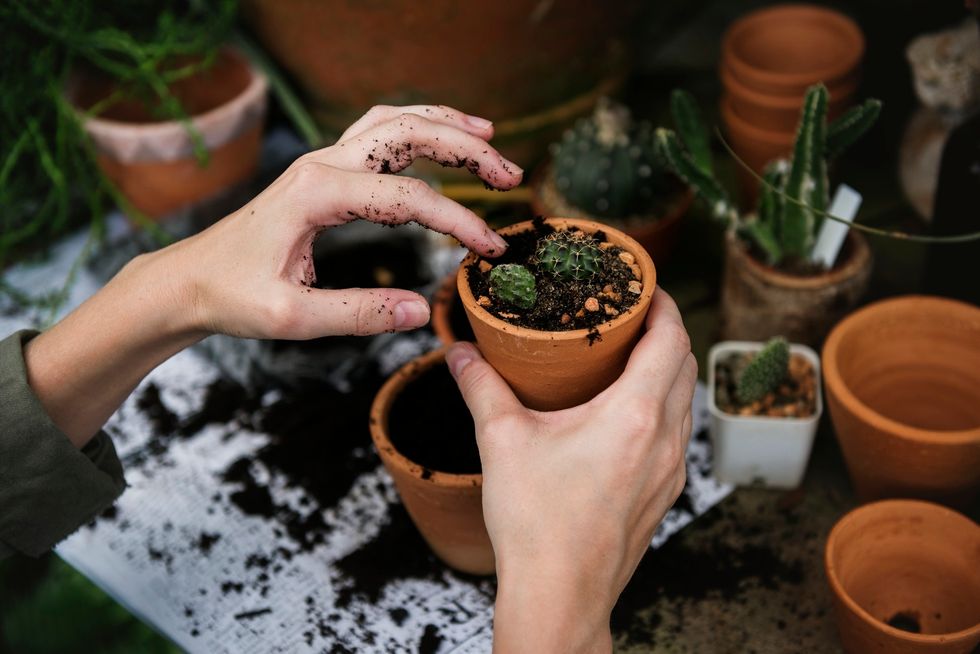Papaya is a nutritious and delicious fruit. In the fruit of papaya, various nutrients such as protein, carbohydrate, calcium, sodium and vitamin A, B, C are found. Papaya has medicinal properties and after the mango, this is a great source of vitamin A in the fruits, which is important for the eyesight. Regular consumption of its fruits reduces to stomach-related diseases.
Papaya contains a digestive enzyme called Papen which is used to make many types of medicines. In India, papaya is grown in about 132 thousand hectare area so that approximately 5667 metric tons of papaya is produced in India. Jam, jelly, fruity, etc. are made from the fruits of papaya.
Papaya is a fruit grown in 9-10 months, and production is also high, so its cultivation is becoming very popular among the farmers. It is cultivated mainly in Bihar, Assam, Madhya Pradesh, Maharashtra and Uttar Pradesh in India. Many species of papaya are found in India, among them, Red Lady Papaya is very famous.
While cultivating papaya, some important things should be taken care of, so that there is no loss of any kind of produce due to which there is economic benefits.
Climate:
Hot and humid climate is considered good for successful production of papaya. Low temperature affects plant growth and fruit development, which results in the sweetness and taste of the fruit. The dry season enhances the sweetness of fruits during fruit maturity. 21-26 degree Celsius temperature is considered good for papaya horticulture. Frost is harmful for papaya.
Soil:
For the cultivation of papaya, loam soil is considered to be the best in which the organic material should be in good quantity. PH of land Value should be between 6.5-7.5. The farm should be a flat and proper arrangement of drainage in the field should be done as the situation of waterlogging increases the chances of disease.
Varieties:
Pusa Minha, Pusa Dwarf, Coorg Honeyide, Pusa Delicius, Pusa Masti, Solon, Wichchington, Coimbatore-2, Coimbatore-3, Coimbatore-5, Red Lady , Surya, Taiwan etc. are some of the good varities only on Farmkey app
Land Preparation:
While selecting the field, it should be noted that there is a proper system of drainage in the field. Papaya should not be planted on the water logged place. Before planting the plants, the field should be well ploughed with the MB plough.
Nursery Preparation:
About 100 sq. M space is required to prepare the nursery for one hectare planting, the nursery beds should be 5 meter long and 1 meter wide. Beds should be made approximately 15-20 cm ridge from the ground. After this, mix well-rotten cow dung manure, sand and soil. The seeds to be sown at distance of 10-15 cm RxR and should be sown at a depth of 1-2 cm depth. To prepare the plant in polyethylene, 200 gauge of 20 X 25 cm Size bags should be used.
Seed Rate:
250-300 gms of seed is enough for a hectare area.
Seed treatment:
The seed of papaya should be treated at a rate of 2 grams per kg seed from the fungicide Captan.
Time of sowing:
Best time to prepare the nursery of papaya is July-August.
Transplanting:
Plants should be planted when the plants are 4-6 weeks old. The spacing of the plants can be kept according to the varieties. The distance of the dwarf species should be 1.25 × 1.25 square meters and the length of long varieties should be kept 2 × 2 square meters. 15 to 20 days prior to the transplanting of the plants, the farmers are advised to prepare Pits of 50 × 50 × 50 cm and the well mixed soil and FYM to be filled in the pits. For the control of termite, the pits should be treated with the Chlorpyrifos. Neem cake should be applied at the rate of 1 kilogram per plant, Neem cake is a good pesticide and fertilizer.
Manure and fertilizer:
Papaya is a fast growing crop and it requires more nutrients for speedy growth. Since papaya continues to produce fruit after its flowering for almost one plus year hence it consumes more nutrients from the soil. Plants require 250 grams of nitrogen, 250 grams of phosphorus and 500 grams of Potash throughout the year. Besides, the plants should be given 50 grams of sulfur, 50 grams of boron and 2.5 kg vermicompost per plant. Nitrogen should be used in 2-3 times and phosphorus and potash should be used only once in the form of basal doses.
Irrigation:
Papaya requires good no of irrigation but water should not be left in standing position in the field or pits.. Generally, irrigation should be done at intervals of 4 to 6 days during summer and 10 to 15 days in winter. Drip irrigation system is the most suitable irrigation system for Papaya. In winters if there are chances of frost, the crop should be immediately irrigated to reduce the damage from the frost
Weed control:
The weed management is very important in the crop of papaya. Weeds are the host for many diseases and pest hence it is important to keep the field weed free. Glyphosat is the chemical that can be used to control the weeds in the field of papaya. The doses of the Glyphosate can be keep 1-2 ltrs/ hectare. At the time of spray of glyphosate, keep the stem of the plants covered and make sure that the chemical should not be touch to the plant stems.
Harvesting:
After 9 to 10 months fruits get ready for harvesting. Just to check if the fruit is mature enough to harvest, just give a little scratch to the fruit. If the milk is replaced by water, it is understood that the fruits has ripen and ready for harvest
Production:
Production of papaya is 30-40 tonnes per hectare which depends on the variety to variety too.
Major Diseases & Pest Control:
Major diseases:
Collar Rot:
This is a serious disease in the nursery. The newly born plants get affected by the disease. The seedlings get rotten at the base and die.
Management:
1. Treatment of the soil should be done with 5 percent solution of pharmalin before sowing of the seed and should be covered with polythene for 48 hours.
2. Seeds should be sown after by treating with Captan or Thiram at the rate of 2 gm per kg seed.
Stem Rot:
In this disease, watery spots are seen on the stem. A leaf of the plant gets yellow and the plants starts drying and finally the disease kills the plants.
Management:
1. There should be proper arrangement of drainage in the field.
2. Root, stem, and surrounding soil should be well treated with the solution of 0.2 percent of diethane M-45 or Bavistin 0.1 percent.
3. There should not be standing water near plants
Leaf Curl Virus:
This is a serious disease of papaya. The disease spreads with the vector white fly, with the increase of the vector the disease spreads throughout the farm. Due to this disease the leaves become twisted, the size becomes smaller and the leaves become clustered.
Management:
1. Pull the affected plants out from the field and buried them deep in the soil.
2. For the control of white fly, spray Acetamiprid or imidacloprid in the plants.
Major pests:
Major pests which affect papaya are white fly, Aphid and mites etc. These can be controlled with the proper management & effective use of pesticides.
Agriculture is a prominent sector of india's economy. It provides a livelihood for about 82 percent of working indians. more articles on India's Agriculture Please Visit :Farmkey.in



 Photo by
Photo by  Photo by
Photo by  Photo by
Photo by  Photo by
Photo by 


 people sitting on chair in front of computer
people sitting on chair in front of computer



 all stars lol GIF by Lifetime
all stars lol GIF by Lifetime two women talking while looking at laptop computerPhoto by
two women talking while looking at laptop computerPhoto by  shallow focus photography of two boys doing wacky facesPhoto by
shallow focus photography of two boys doing wacky facesPhoto by  happy birthday balloons with happy birthday textPhoto by
happy birthday balloons with happy birthday textPhoto by  itty-bitty living space." | The Genie shows Aladdin how… | Flickr
itty-bitty living space." | The Genie shows Aladdin how… | Flickr shallow focus photography of dog and catPhoto by
shallow focus photography of dog and catPhoto by  yellow Volkswagen van on roadPhoto by
yellow Volkswagen van on roadPhoto by  orange i have a crush on you neon light signagePhoto by
orange i have a crush on you neon light signagePhoto by  5 Tattoos Artist That Will Make You Want A Tattoo
5 Tattoos Artist That Will Make You Want A Tattoo woman biting pencil while sitting on chair in front of computer during daytimePhoto by
woman biting pencil while sitting on chair in front of computer during daytimePhoto by  a scrabbled wooden block spelling the word prizePhoto by
a scrabbled wooden block spelling the word prizePhoto by 
 StableDiffusion
StableDiffusion
 StableDiffusion
StableDiffusion
 StableDiffusion
StableDiffusion

 women sitting on rock near body of waterPhoto by
women sitting on rock near body of waterPhoto by 



